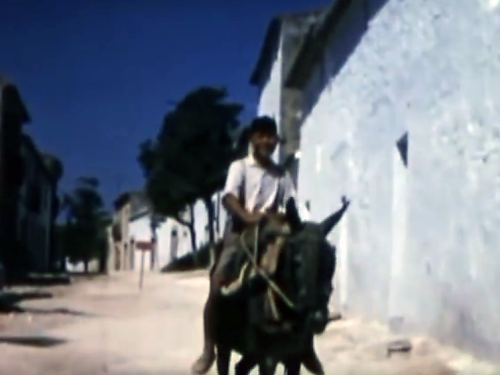Time of memories: How Jávea was 60 years ago
Christmas time is always a time of memories and emotions. At Construcciones Cholbi we also want to celebrate it like this and that is why we have set ourselves a unique video. Some images recorded in Jávea in 1958 that show in two minutes how some areas of the population were then. 60 years is a lot. Let's go see it!
1-The Montgó, always present
The mountain that watches over everything in Jávea appears in the close-ups: el Montgó always present. And at his feet Calvary and Santa Lucía. And almost in the foreground you can guess what the Cholbi Brothers Asylum could be.
2-View from the south
In this plane we see the silhouette of the town of Jávea with the bell tower of the church of San Bartolomé dominating the landscape. The location of the camera would probably be at the current intersection of Carretera del Pla with Avenida dels Furs that goes down to Port. The Thiviers neighborhood did not exist then.
3-The old Carretera del Pla to Cabo de La Nao
What is currently the Carretera del Pla to Cabo de La Nao was for many years a beautiful road that was protected on one side and the other by mulberry trees up to six meters high. As we can see, the path was shared by herds, carts and the -few- cars that would then be in the town.
4-Corn crops
Today, agriculture is no longer a key factor in the economy of Jávea. But in 1958 it was the most important. At that time, cereal crops were common, which are currently very difficult to find here. It is the case of corn. First, fields with these plants appear and then, already collected, on a cart. In the background you can see the church of San Bartolomé, the hermitage of Santa Lucía and the area of Los Molinos and the Puchol without houses built.
5-The Clot Portal
To get you started, it is the area of the new town hall, where you can also find the public car park that bears the same name. In the images, a man is seen walking next to a cart drawn by a horse. In the background we discover the cross, which is currently in the same square.
6-Means of transportation
At that time the most common means of transportation was by car, although in reality everyone moved on foot. Jávea has an extensive municipal area of almost 68 square kilometers, which required long walks to reach the fields. As the car is so common, the many houses in the Historic Center They had large doors to access with them. In some of the the reforms that we have carried out these doors have been kept so authentic.
7-The South Round
The final images of the recording are those of a young man dressed in a straw hat coming face to face with the camera on the back of a donkey. The street he walks along is a section of the Ronda Sur, just before reaching the Portal del Clot. We observe the whitewashed facades of the typical Jávea houses.
And now we invite you to watch the video.







